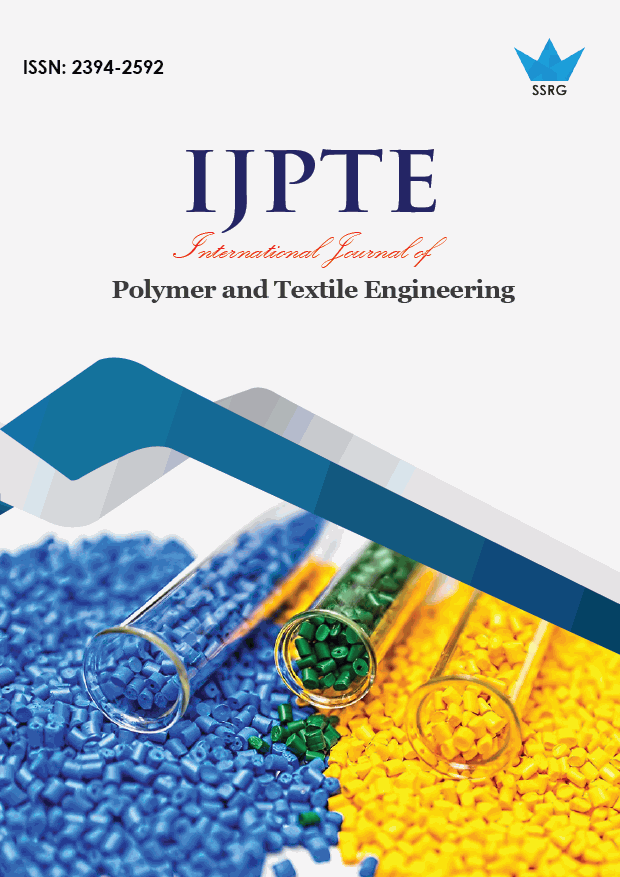Extraction Of Neem Twigs Fiber

| International Journal of Polymer and Textile Engineering |
| © 2020 by SSRG - IJPTE Journal |
| Volume 7 Issue 1 |
| Year of Publication : 2020 |
| Authors : Joyshree Ayekpam, N.Vasugi |
How to Cite?
Joyshree Ayekpam, N.Vasugi, "Extraction Of Neem Twigs Fiber," SSRG International Journal of Polymer and Textile Engineering, vol. 7, no. 1, pp. 39-41, 2020. Crossref, https://doi.org/10.14445/23942592/IJPTE-V7I1P105
Abstract:
In this era of environmental consciousness, several research in natural fibres are in progress to increase the renewable fibers for different applications in the field of Technical textiles. In this study , Neem( Azadirachta indica) which is one of the most useful medicinal plant and widely grown in India has been selected and the fiber has been extracted from its twigs by the process of water retting. Retting is one of the traditional and reliable method in the process of fiber extraction that determines the fiber quality. The process was carried out for 20 days . The extracted fiber was then tested for antibacterial activity and FT-IR analysis.
Keywords:
Neem twigs fiber, Water retting, Antibacterial, FT-IR
References:
[1] Patel Margi H and Desai Pratibha B. 2014, Grafting of Medical Textile using Neem Leaf Extract for Production of Antimicrobial Textile. Research Journal of Recent Sciences. Vol.3.ISSN 2277-2502,pp;24-29
[2] Manimekalai. G and Kavitha . S. 2017, A Review on Application of Retting Techniques for Natural Fiber Extraction. International Journal of Creative Research Thoughts (IJCRT).Vol.5(4). ISSN: 2320-2882. pp; 372- 377
[3] NIIR Board of Consultants & Engineers, 2005, Natural Fibers Handbook with Cultivation & Uses, National Institute of Industrial Research. Pp:31-34.
[4] Pavia, Lampman, Kriz and Vyvyan 2015, Introduction to Spectroscopy Fifth Edition, Cengage Learning India Private Limited. Pp: 27-31.
[5] Ruchi Tiwari, Amit K.V. , Sandip chakraborty and Kuldeep Dhalma, 2014, Neem (Azadirachta indica) and its Potential for Safeguarding Health of
Animals and Humans: A Review. Journal of Biological Sciences. Vol.14 (2):110-123.
[6] Udeani and Nkemdilim Angela, 2011. Extraction and Textile Qualities of Fibers from Some Xerophytic Plants. Asian Journal of Textile. Vol.1: 34-41
[7] Zaidan, M.R.S., Noor Rain, A., Badrul, A.R., Adlin, A., Norazah, A. & Zakiah, I(2005). In vitro screening of five local medicinal plants for antibacterial activity using disc diffusion method. Tropical Biomedicine. Vol. 22(2): 165–170

 10.14445/23942592/IJPTE-V7I1P105
10.14445/23942592/IJPTE-V7I1P105